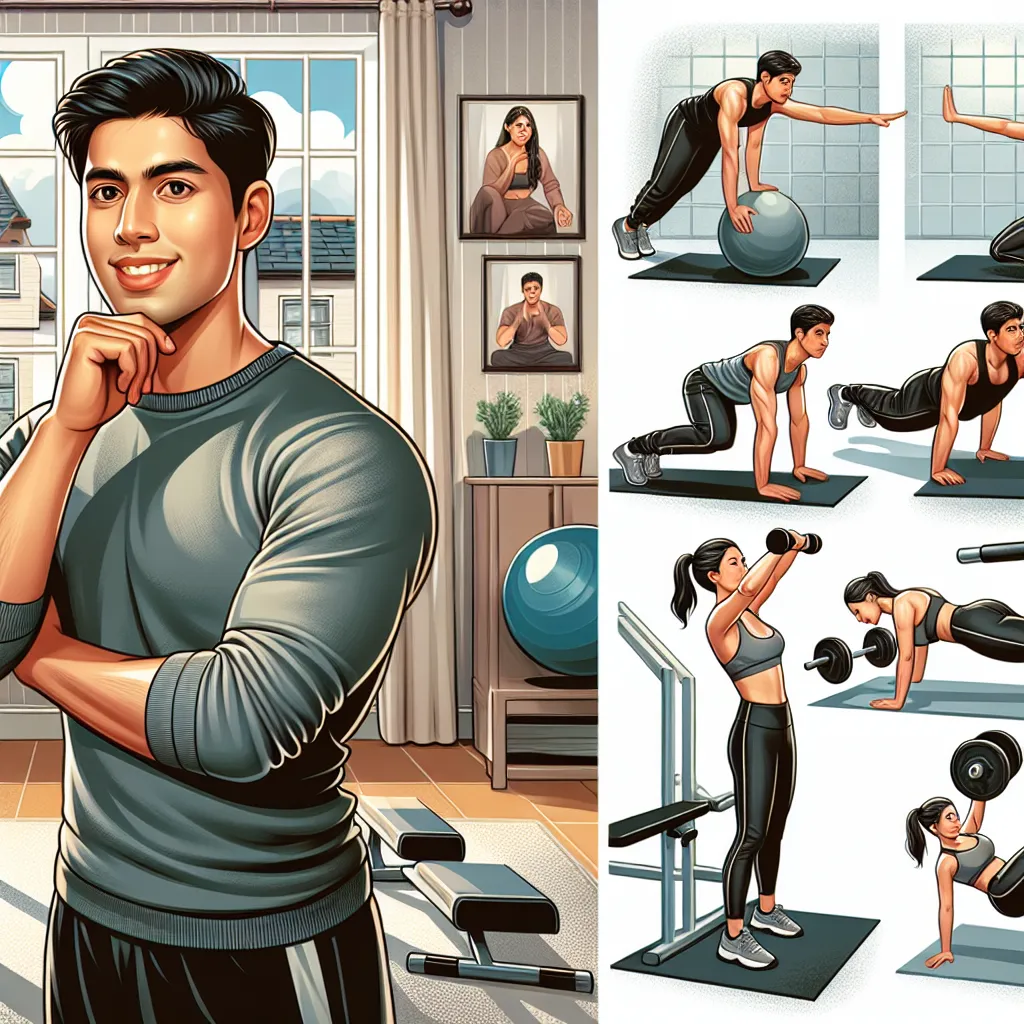Bodyweight exercises, also known as calisthenics, are a form of strength training that uses one’s own body weight as resistance. These exercises are versatile, effective, and can be performed almost anywhere without the need for equipment.
Pronunciation: /ˈbɒdɪweɪt ˈeksəsaɪzɪz/
Part of speech: Noun phrase
 Bodyweight exercises demonstration
Bodyweight exercises demonstration
1. Context and Usage
Examples in Context
-
Bodyweight exercises are an excellent way to build strength and endurance without the need for expensive gym equipment.
- In this sentence, “bodyweight exercises” is used as the subject, emphasizing their effectiveness and accessibility.
-
The fitness instructor recommended incorporating bodyweight exercises into our daily routine to improve overall fitness.
- Here, “bodyweight exercises” is used as the object of the verb “incorporating,” suggesting their integration into a fitness regimen.
-
During the lockdown, many people turned to bodyweight exercises as a convenient way to stay fit at home.
- This example highlights the practicality of bodyweight exercises in a specific situation (lockdown), showcasing their adaptability.
-
Athletes often use bodyweight exercises to maintain their strength and flexibility during the off-season.
- This sentence demonstrates the relevance of bodyweight exercises in professional sports training.
-
The high-intensity interval training program primarily consisted of bodyweight exercises to maximize calorie burn and muscle engagement.
- This example shows how bodyweight exercises can be incorporated into more intense workout routines.
Common Contexts
Bodyweight exercises are frequently discussed in contexts related to:
- Home workouts
- Fitness routines for beginners
- Military and law enforcement training
- Travel-friendly exercise options
- Rehabilitation and physical therapy
Frequency in IELTS
In IELTS exams, “bodyweight exercises” may appear in:
- Reading passages about fitness trends or health topics (moderate frequency)
- Listening sections discussing workout routines or gym alternatives (low to moderate frequency)
- Writing Task 2 essays on health, fitness, or lifestyle topics (occasional occurrence)
- Speaking Part 3 discussions about exercise habits or fitness methods (moderate frequency)
2. Vocabulary Analysis
Word Structure
- Body + weight + exercises
- “Body” (noun) refers to the physical structure of a person
- “Weight” (noun) indicates the heaviness or mass of something
- “Exercises” (plural noun) refers to physical activities done to improve health or fitness
Synonyms and Antonyms
Synonyms:
- Calisthenics (noun) /ˌkælɪsˈθenɪks/
- Definition: Gymnastic exercises to achieve bodily fitness and grace of movement
- Body-resistance exercises (noun phrase) /ˈbɒdi rɪˈzɪstəns ˈeksəsaɪzɪz/
- Definition: Exercises that use the body’s own weight as resistance
- No-equipment workouts (noun phrase) /nəʊ ɪˈkwɪpmənt ˈwɜːkaʊts/
- Definition: Exercise routines that don’t require any additional tools or machines
Antonyms:
- Weight training (noun) /weɪt ˈtreɪnɪŋ/
- Definition: Exercises using external weights for resistance
- Machine-based exercises (noun phrase) /məˈʃiːn beɪst ˈeksəsaɪzɪz/
- Definition: Workouts performed using gym equipment or machines
- Cardio exercises (noun phrase) /ˈkɑːdɪəʊ ˈeksəsaɪzɪz/
- Definition: Aerobic activities that primarily target the cardiovascular system
3. Memory Techniques
Mind Map
Create a mind map centered on “Bodyweight Exercises” with branches for:
- Types (e.g., push-ups, squats, planks)
- Benefits (e.g., strength, flexibility, convenience)
- Equipment-free (e.g., anytime, anywhere, no cost)
- Variations (e.g., beginner, intermediate, advanced)
- Muscle groups targeted (e.g., upper body, core, lower body)
Mnemonic Story
Imagine a superhero named “Bodyman” who gains strength by performing various bodyweight exercises. He doesn’t need any special equipment – just his own body! Bodyman travels the world, showing people how to stay fit using push-ups, squats, and planks. His catchphrase is “Your body is your gym!”
4. Practice Exercises
Application Exercise
Write a paragraph describing your ideal workout routine, incorporating at least three bodyweight exercises. Use specific details and explain why you choose these exercises. For example:
“My ideal workout routine centers around bodyweight exercises for their convenience and effectiveness. I start with a set of push-ups to target my upper body and core. Then, I move on to squats, which are excellent for building lower body strength. Finally, I finish with a plank hold to engage my entire core and improve my overall stability. These bodyweight exercises allow me to maintain my fitness level without the need for gym equipment, making it easy to stay consistent even when traveling or short on time.”
IELTS-style Task
IELTS Writing Task 2:
Some people believe that expensive gym memberships and equipment are necessary for maintaining good physical fitness. Others argue that bodyweight exercises are just as effective and more accessible. Discuss both views and give your own opinion.
In your response, be sure to:
- Explain the advantages and disadvantages of both gym equipment and bodyweight exercises
- Use specific examples to support your points
- Incorporate relevant vocabulary related to fitness and exercise
- Structure your essay clearly with an introduction, body paragraphs, and conclusion
5. Conclusion
Understanding and using the term “bodyweight exercises” correctly can significantly enhance your vocabulary for discussing fitness and health topics in the IELTS exam. These exercises represent a versatile and accessible approach to fitness that is relevant in various contexts, from personal health discussions to broader societal trends in wellness.
Remember to practice using this term in different sentence structures and contexts to become more comfortable with it. Try incorporating it into your speaking practice or writing tasks, and don’t hesitate to explore related terms like functional fitness or resistance training to broaden your fitness vocabulary even further.
We encourage you to share your experiences with bodyweight exercises or any questions you might have about using this term in the comments section below. How do you incorporate bodyweight exercises into your fitness routine, and how has learning this term improved your ability to discuss health and fitness topics in English?


